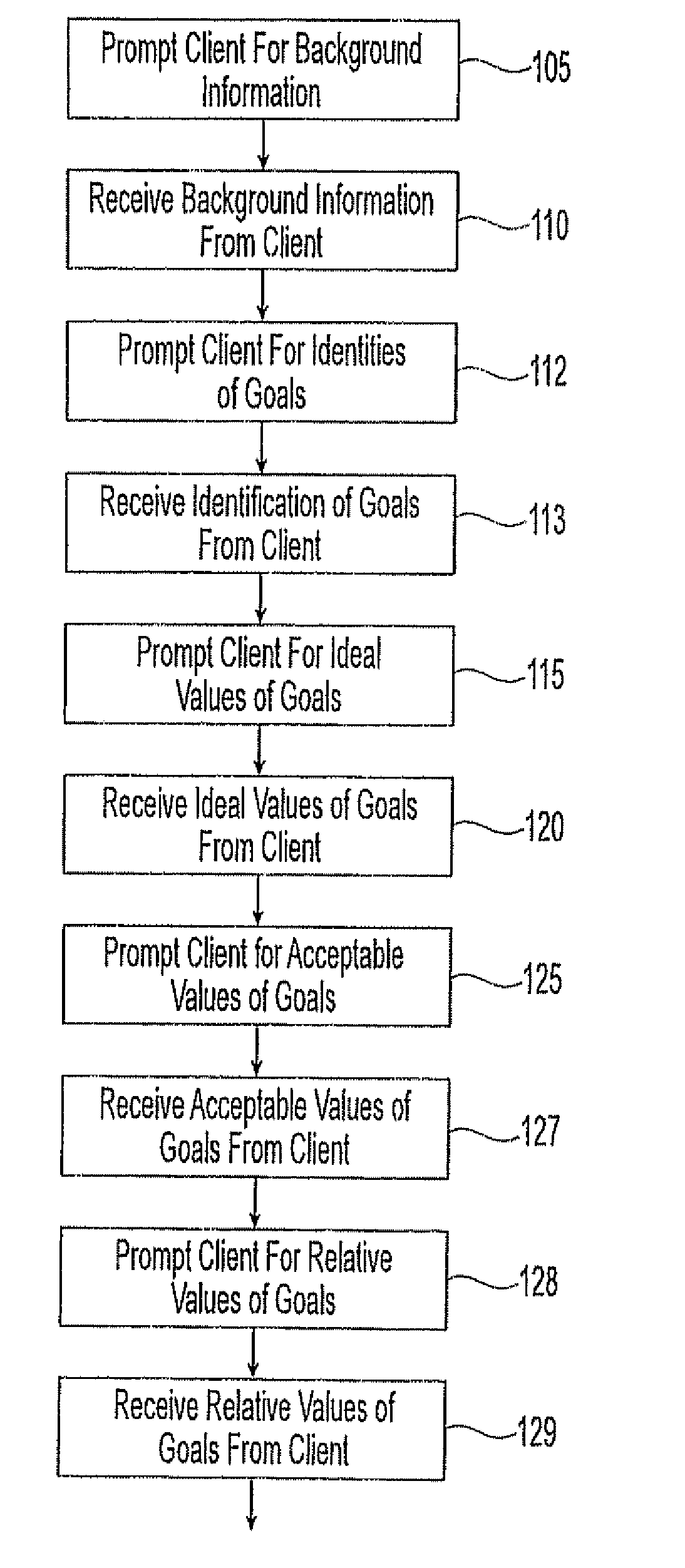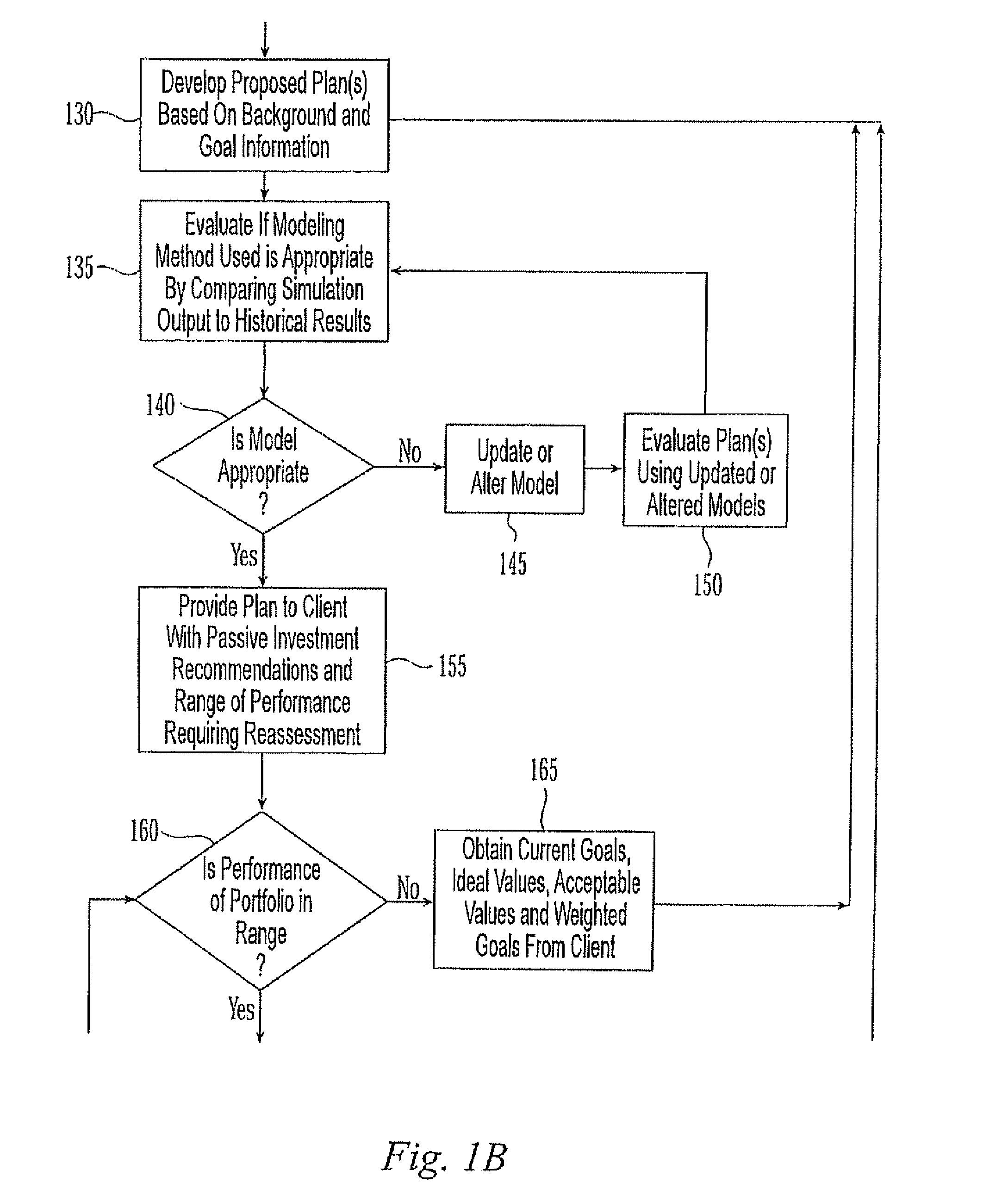Method and system for financial advising
a financial advisory and system technology, applied in the field of financial services, can solve the problems of carrying the risk of material uncertainty of underperforming or potentially outperforming the asset allocation strategy, and achieve the effect of minimizing sacrifice, avoiding unacceptable sacrifice and insufficient confiden
- Summary
- Abstract
- Description
- Claims
- Application Information
AI Technical Summary
Benefits of technology
Problems solved by technology
Method used
Image
Examples
Embodiment Construction
[0019] A new method for financial advising is disclosed with the goal of finding a balance for the client between insufficient confidence (i.e. too much uncertainty) and unnecessary sacrifice. Current techniques attempt to identify the client's maximum tolerance for risk, and then to optimize asset allocation based on that maximum risk, without consideration of whether such risk is warranted. The client is periodically advised of the status of their portfolio based on actual performance of the markets Typically, this status review consists of a recitation of the performance of the client's portfolio compared to the market. Less often, the client is provided with an updated % risk of not achieving their stated goals, or current probability of “achieving” goals (which is actually the chance of exceeding, but rarely is disclosed as such). If actual performance of the client's investment portfolio is poor, the client will usually be advised to stick to their long term plan in hope that ...
PUM
 Login to View More
Login to View More Abstract
Description
Claims
Application Information
 Login to View More
Login to View More - R&D
- Intellectual Property
- Life Sciences
- Materials
- Tech Scout
- Unparalleled Data Quality
- Higher Quality Content
- 60% Fewer Hallucinations
Browse by: Latest US Patents, China's latest patents, Technical Efficacy Thesaurus, Application Domain, Technology Topic, Popular Technical Reports.
© 2025 PatSnap. All rights reserved.Legal|Privacy policy|Modern Slavery Act Transparency Statement|Sitemap|About US| Contact US: help@patsnap.com



